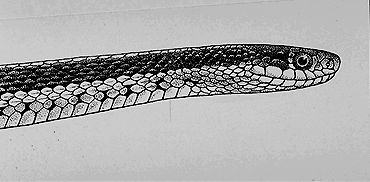Article
Raven
The raven is a large, black bird with a purplish lustre, belonging, like the crow, to the genus Corvus.

Enter your search term
Signing up enhances your TCE experience with the ability to save items to your personal reading list, and access the interactive map.
Create AccountArticle
The raven is a large, black bird with a purplish lustre, belonging, like the crow, to the genus Corvus.
"https://d3d0lqu00lnqvz.cloudfront.net/media/media/13503d25-3899-45c6-aa31-c988400d0dad.jpg" // resources/views/front/categories/view.blade.phphttps://d3d0lqu00lnqvz.cloudfront.net/media/media/13503d25-3899-45c6-aa31-c988400d0dad.jpg

Article
Description Rays are flattened dorsoventrally, the body appearing disclike. The pectoral fins are attached to the side of the head. The mouth, nostrils and 5 pairs of gill slits are located on the white lower surface. A pair of spiracles occurs on the upper surface behind the eyes.
"https://d3d0lqu00lnqvz.cloudfront.net/media/media/aaf4d826-92aa-43ed-9759-91127c90e8b8.jpg" // resources/views/front/categories/view.blade.phphttps://d3d0lqu00lnqvz.cloudfront.net/media/media/aaf4d826-92aa-43ed-9759-91127c90e8b8.jpg

Article
Reptiles are a group of vertebrate animals that, like mammals, produce an amniote egg, with extra-embryonic sacs for waste, yolk, and protection, and often possessing a shell, particularly if released by the female before development of the embryo is completed. DNA analysis has allowed comparison of the genes in common for living organisms and new fossils have augmented our knowledge of the sequence of appearance of many features. Combined, these lines of research have produced changes from classical classification in which birds were regarded as most closely related to mammals primarily because they are both endothermic (able to maintain an internal body temperature). Now it is believed that each evolved this feature independently and that birds are derived from dinosaurs. Today's reptiles represent 2 main lines: Parareptilia or Chelonia (turtles) and Eureptilia or Diapsida, which contains the Lepidosauria (Tuatara, lizards and snakes) and Archosuria (crocodilians and birds).
"https://d3d0lqu00lnqvz.cloudfront.net/media/media/e860f0e5-12f6-4683-a428-98739c60c42a.jpg" // resources/views/front/categories/view.blade.phphttps://d3d0lqu00lnqvz.cloudfront.net/media/media/e860f0e5-12f6-4683-a428-98739c60c42a.jpg

Article
Rodentia, largest and most common order of mammals, including 29 families, 418 genera and 1793 species. In Canada, 68 of the 163 species of terrestrial mammals are rodents.
"https://www.thecanadianencyclopedia.ca/images/tce_placeholder.jpg?v=e9dca980c9bdb3aa11e832e7ea94f5d9" // resources/views/front/categories/view.blade.phphttps://www.thecanadianencyclopedia.ca/images/tce_placeholder.jpg?v=e9dca980c9bdb3aa11e832e7ea94f5d9

Article
The wild horses, named for the island they inhabit, are now the only terrestrial mammals on Sable Island aside from the few inhabitants.
"https://d3d0lqu00lnqvz.cloudfront.net/media/media/bb59d32a-9657-4d60-acab-db0e4608fe4f.jpg" // resources/views/front/categories/view.blade.phphttps://d3d0lqu00lnqvz.cloudfront.net/media/media/bb59d32a-9657-4d60-acab-db0e4608fe4f.jpg

Article
Salamanders are tailed amphibians belonging to the order Caudata. There are around 800 known species worldwide; 22 are found in Canada. In addition to these species, the unisexual Ambystoma, a unique lineage of salamanders that does not conform to the typical definition of a species, are also found in Canada. Salamanders mainly live in the temperate regions of the Northern Hemisphere and tropical South and Central America. North America is home to more species of salamanders than anywhere else in the world. In Canada, salamanders are found from the Maritimes to British Columbia, and as far north as central Labrador and northern British Columbia; none have been recorded on the island of Newfoundland.
"https://d3d0lqu00lnqvz.cloudfront.net/media/dreamstime_xl_21249065.jpg" // resources/views/front/categories/view.blade.phphttps://d3d0lqu00lnqvz.cloudfront.net/media/dreamstime_xl_21249065.jpg

Article
The Salish Woolly dog was an important part of Coast Salish life throughout southern Vancouver Island, the Strait of Georgia, and Washington State, as the dogs’ hair was used to weave clothing and blankets. Due to the increased presence of European settlers and their machine-spun sheep wool, the Salish Woolly dog population declined in the 1800s until its extinction around 1900.
"https://d3d0lqu00lnqvz.cloudfront.net/media/new_article_images/Salish-wooly-dog.jpg" // resources/views/front/categories/view.blade.phphttps://d3d0lqu00lnqvz.cloudfront.net/media/new_article_images/Salish-wooly-dog.jpg

Article
The salmon is a family of fish, Salmonidae [Lat salire, "to leap"], with soft fin rays, a short dorsal fin, an adipose (fatty) fin, and teeth in the jaws.
"https://d3d0lqu00lnqvz.cloudfront.net/media/media/35912412-9cef-4ef3-b31e-39c08f537a34.jpg" // resources/views/front/categories/view.blade.phphttps://d3d0lqu00lnqvz.cloudfront.net/media/media/35912412-9cef-4ef3-b31e-39c08f537a34.jpg

"https://d3d0lqu00lnqvz.cloudfront.net/media/media/db84b082-87bb-42fd-9a57-f102344d71fe.jpg" // resources/views/front/categories/view.blade.phphttps://d3d0lqu00lnqvz.cloudfront.net/media/media/db84b082-87bb-42fd-9a57-f102344d71fe.jpg

"https://d3d0lqu00lnqvz.cloudfront.net/media/media/8a982aaa-04b3-4292-a95d-8eb1cfc8f79c.jpg" // resources/views/front/categories/view.blade.phphttps://d3d0lqu00lnqvz.cloudfront.net/media/media/8a982aaa-04b3-4292-a95d-8eb1cfc8f79c.jpg

Article
Sawfly, common name for members of insect order Hymenoptera, which resemble wasps and are characterized by the lack of a marked constriction between the first and second abdominal segments.
"https://www.thecanadianencyclopedia.ca/images/tce_placeholder.jpg?v=e9dca980c9bdb3aa11e832e7ea94f5d9" // resources/views/front/categories/view.blade.phphttps://www.thecanadianencyclopedia.ca/images/tce_placeholder.jpg?v=e9dca980c9bdb3aa11e832e7ea94f5d9

Article
Scale Insect, highly specialized insect belonging to order Hemiptera, suborder Homoptera, super-family Coccoidea.
"https://d3d0lqu00lnqvz.cloudfront.net/media/media/439b0d13-46b3-4cdf-aa29-b296eecb9985.jpg" // resources/views/front/categories/view.blade.phphttps://d3d0lqu00lnqvz.cloudfront.net/media/media/439b0d13-46b3-4cdf-aa29-b296eecb9985.jpg

Article
Scallop is a bivalve (hinged shell) mollusc of suborder Pectinina. Scallops are found in all seas.
"https://d3d0lqu00lnqvz.cloudfront.net/media/media/cd549afe-419a-4907-88e2-c009fcbc4fa7.jpg" // resources/views/front/categories/view.blade.phphttps://d3d0lqu00lnqvz.cloudfront.net/media/media/cd549afe-419a-4907-88e2-c009fcbc4fa7.jpg

Article
A scorpion is a carnivorous and venomous arthropod of the class Arachnida, order Scorpiones. Known from fossils 425-450 million years old, scorpions are among the oldest terrestrial animals.
"https://d3d0lqu00lnqvz.cloudfront.net/media/Twitter_Cards/scorpion.jpg" // resources/views/front/categories/view.blade.phphttps://d3d0lqu00lnqvz.cloudfront.net/media/Twitter_Cards/scorpion.jpg

Article
Scorpionfish, or rockfish (Scorpaenidae), family of bottom-dwelling, marine fishes with large heads, mouths and eyes, stout bodies and large pectoral fins.
"https://d3d0lqu00lnqvz.cloudfront.net/media/media/76402cf1-13da-4268-b02d-f3be29a8ff94.jpg" // resources/views/front/categories/view.blade.phphttps://d3d0lqu00lnqvz.cloudfront.net/media/media/76402cf1-13da-4268-b02d-f3be29a8ff94.jpg
